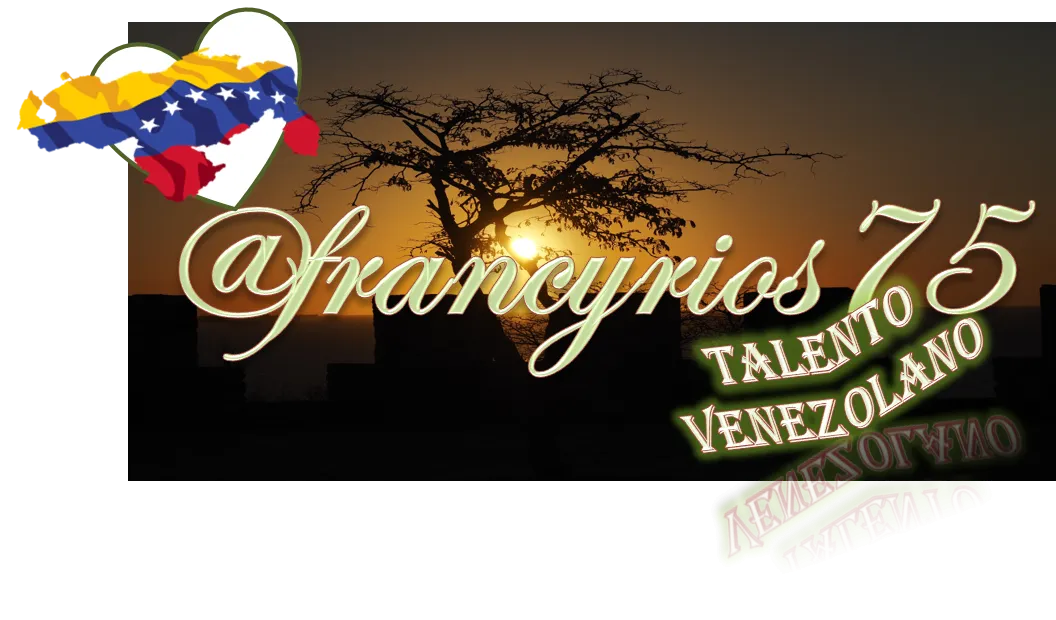Bienvenidos Queridos Amantes de la Fotografía
Welcome Dear Photography Lovers
Siempre he amado las flores, y mis preferidas son las rosas y las orquídeas, pero la flor de la que les hablaré hoy tiene un gran significado en mi vida. Crecí conociéndola, ya que no solo eran las favoritas de mi mami, que en paz descanse. Además, mi papá las cultivaba, en el jardín de nuestra casa en mi querido Carúpano, mi ciudad natal. Las cuidaba con mucha devoción y Dios salvara al que osara maltratarlas, y ellas les retribuían sus cuidados llenando nuestro jardín con un colorido y hermosura.
I have always loved flowers, and my favorites are roses and orchids, but the flower I will talk about today has a great meaning in my life. I grew up knowing them, as they were not only my mommy's favorite, may she rest in peace. In addition, my dad grew them in the garden of our house in my beloved Carúpano, my hometown. He took care of them with great devotion and God save anyone who dared to mistreat them, and they repaid his care by filling our garden with color and beauty.


I always knew it by the name of Cala, but after this research that I share with you today, to my surprise, I discovered that it is not a Cala. However, they are something like cousins, this, because they belong to the same family, the Araceae. But, in the case of the flowers I show you today, they belong to the genus Anthurium, which includes a good number of species. On the other hand, the scientific name of the species that I show you is Anthurium Andraeanum, although, it is commonly known as Red Anthurium.

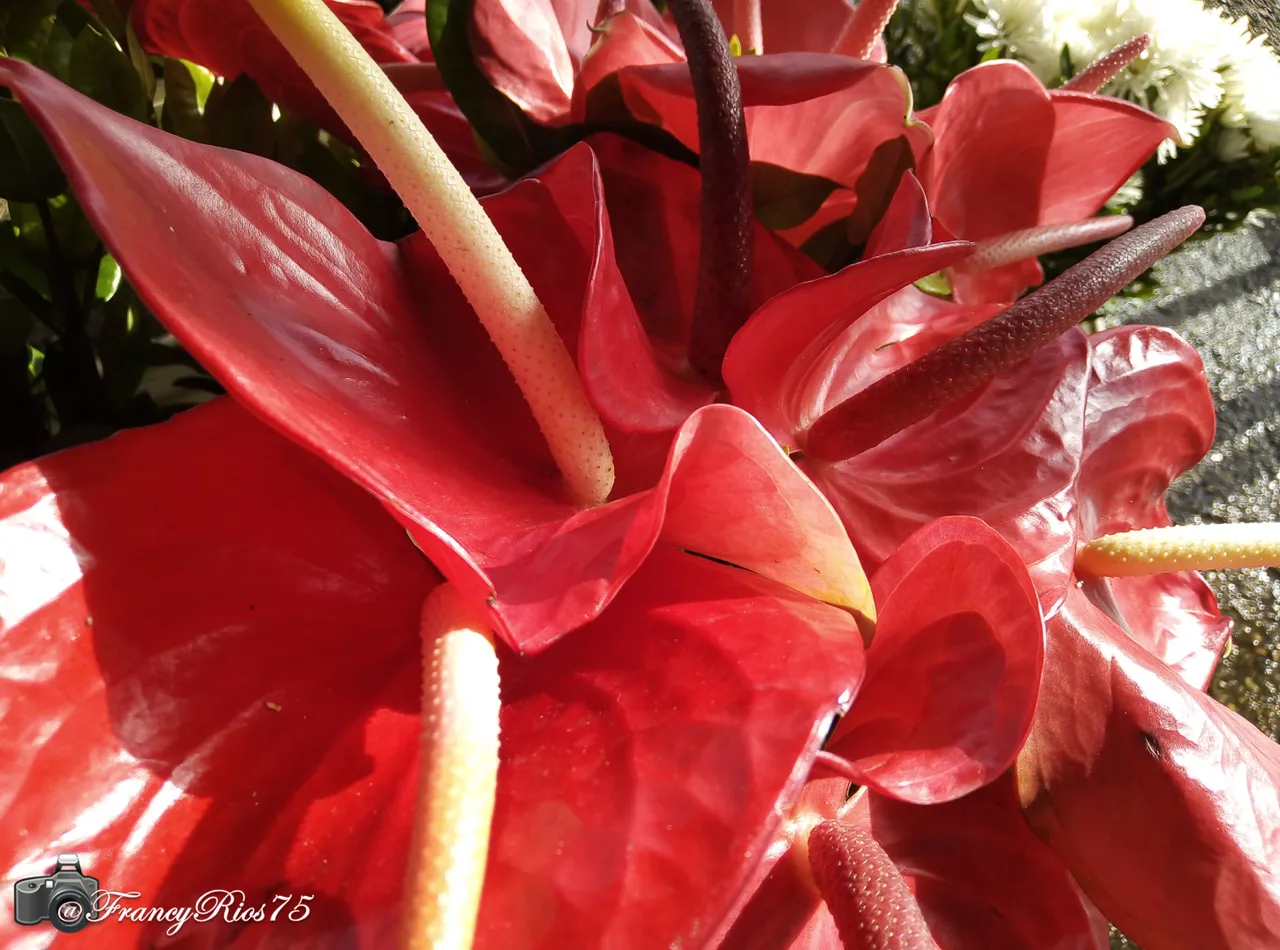

It is a species native to Colombia and Ecuador, however, it grows wild throughout the tropical and subtropical zones of Central and South America. Its large and striking heart-shaped leaves in bright green, along with its lustrous blood-red flowers, almost plastic in appearance, makes it very sought after as an ornamental plant. It helps a lot, that its inflorescences, once cut with the right care can last up to 2 months.

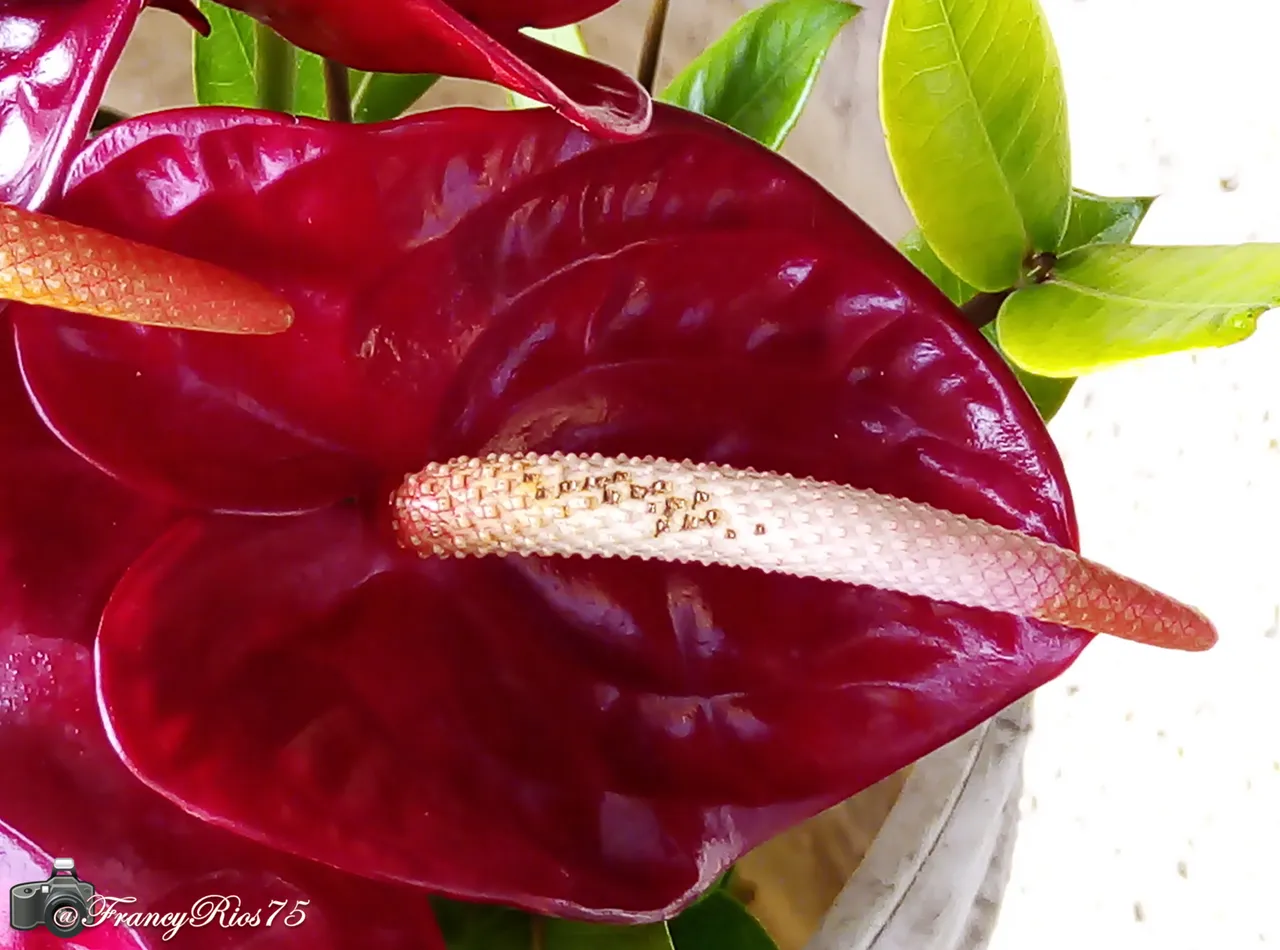

But, guess what, the Anthurium or Love Flower as it is known in some places also has a surprise, by the way, I have come across many lately in my research. Well, it turns out that, in this plant, what we know as its beautiful, glistening red, heart-shaped flower, and which usually measures between 10 to 15 centimeters, is no such thing. What is mistaken for its flower is actually a kind of bract or modified leaf, which in this case is called a spathe. The true inflorescence is the white or yellow tail-shaped wand that emerges above the spathe, which is called spadix. This is the bearer of the many tiny flowers, how about that, amazing, isn't it? But, in addition, its tiny flowers are also peculiar, since they are hermaphrodites, that is, they have both sexual organs, ovaries, two carpels and four antennae.

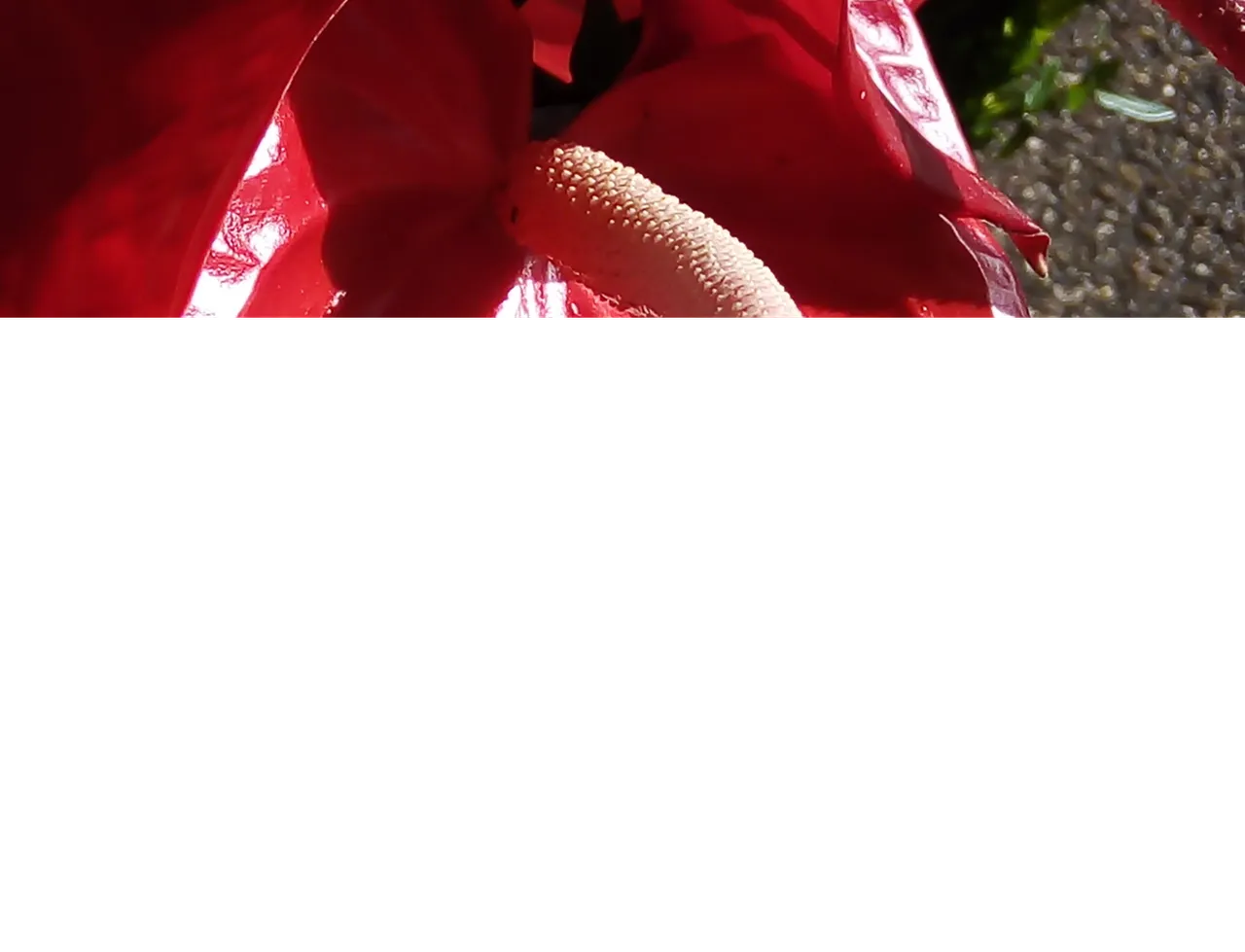

In another order of ideas, this perennial species has a herbaceous stem, but only during its youth, becoming semi-woody as it reaches adulthood. The genus is generally considered as indoor plants par excellence, but in the particular case of this species it is not easy to cultivate. It is quite capricious in terms of its requirements, this I learned from my dad, for example, you can not give the direct sun, because its leaves burn taking a yellowish color and end up being damaged.

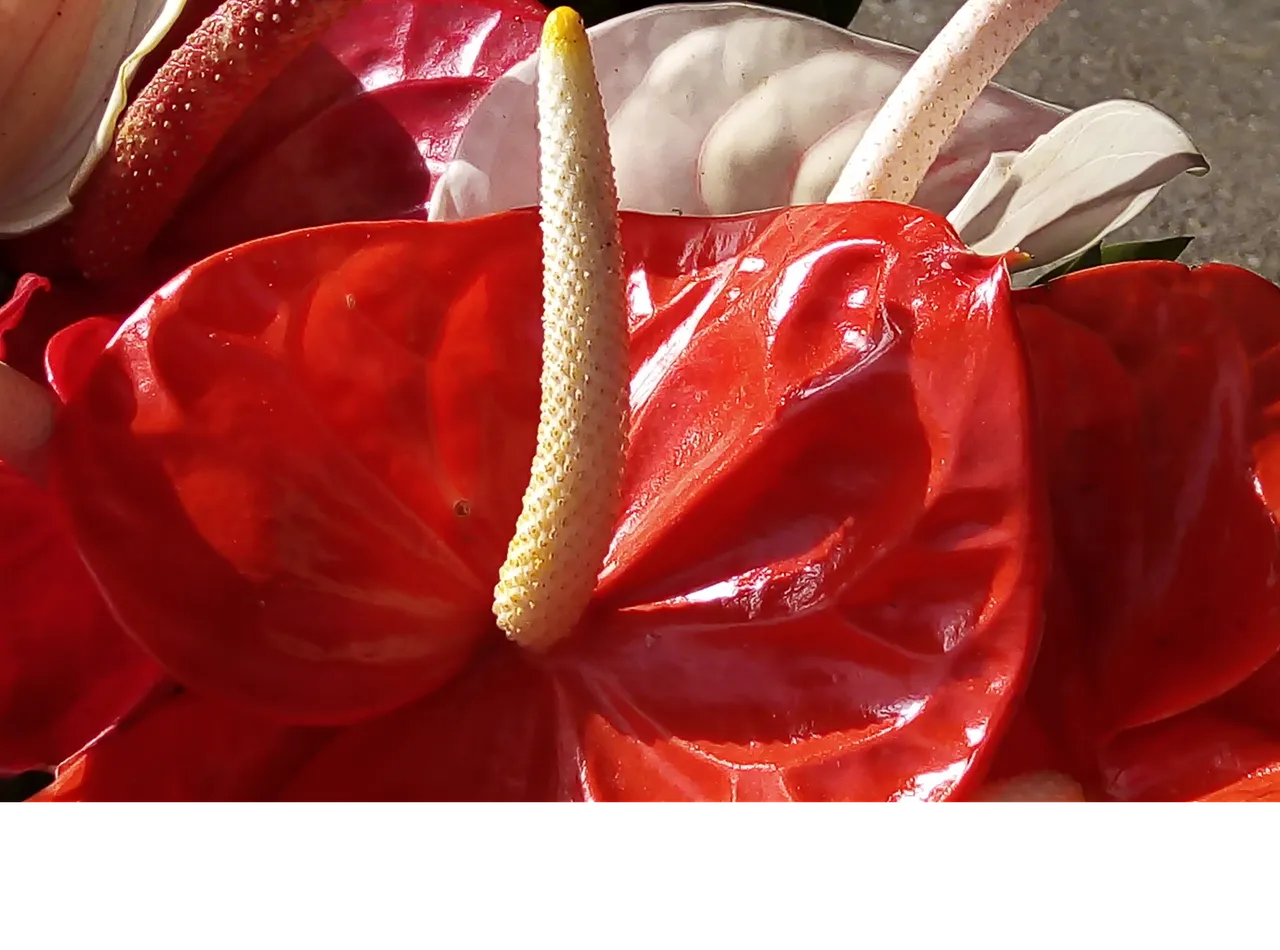

Their fibrous and fleshy roots develop at shallow depths and are cylindrical in shape. They require a substrate, which must maintain the humidity, but at the same time drain easily, I remember that my daddy, placed a substrate based mainly on coconut tow. He watered them daily, but only in the afternoon once the sun fell, and every so often, he removed the soil and pruned them at stem level. The tops that I cut off, I planted them again obtaining new plants, my dad says that with this you get inflorescence with longer stems.

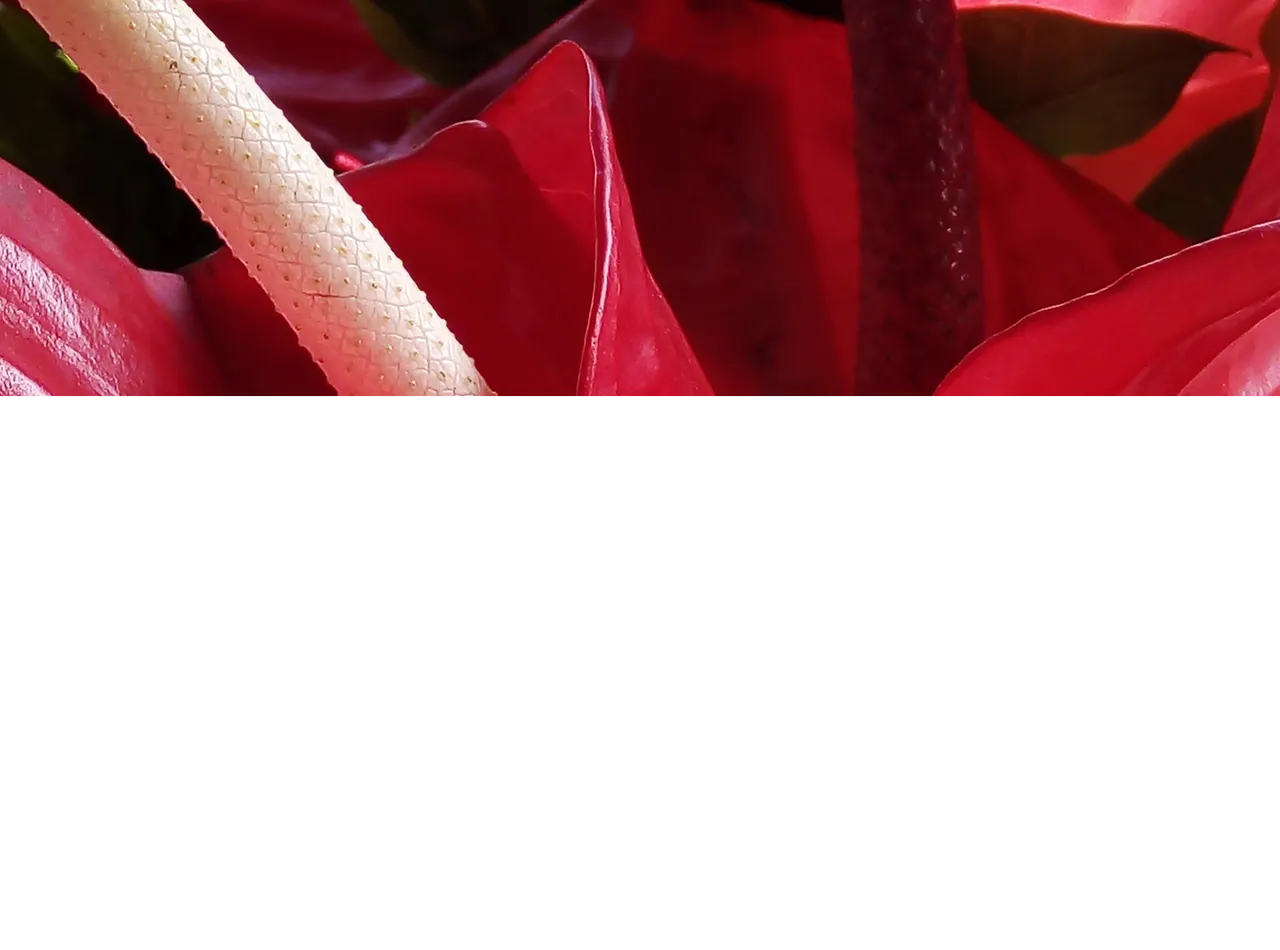

As I already mentioned, this beautiful plant has a special place in the memories of my childhood, adolescence, even in my adulthood, because my parents have always grown them in their house. Moreover, they were part of one of the most important events of my life, after my Ecclesiastical Wedding, there was a very simple family celebration. But my mom took it upon herself to buy the reddest, brightest and most beautiful Anturio's she could find, and fill the whole house with those beautiful flowers.

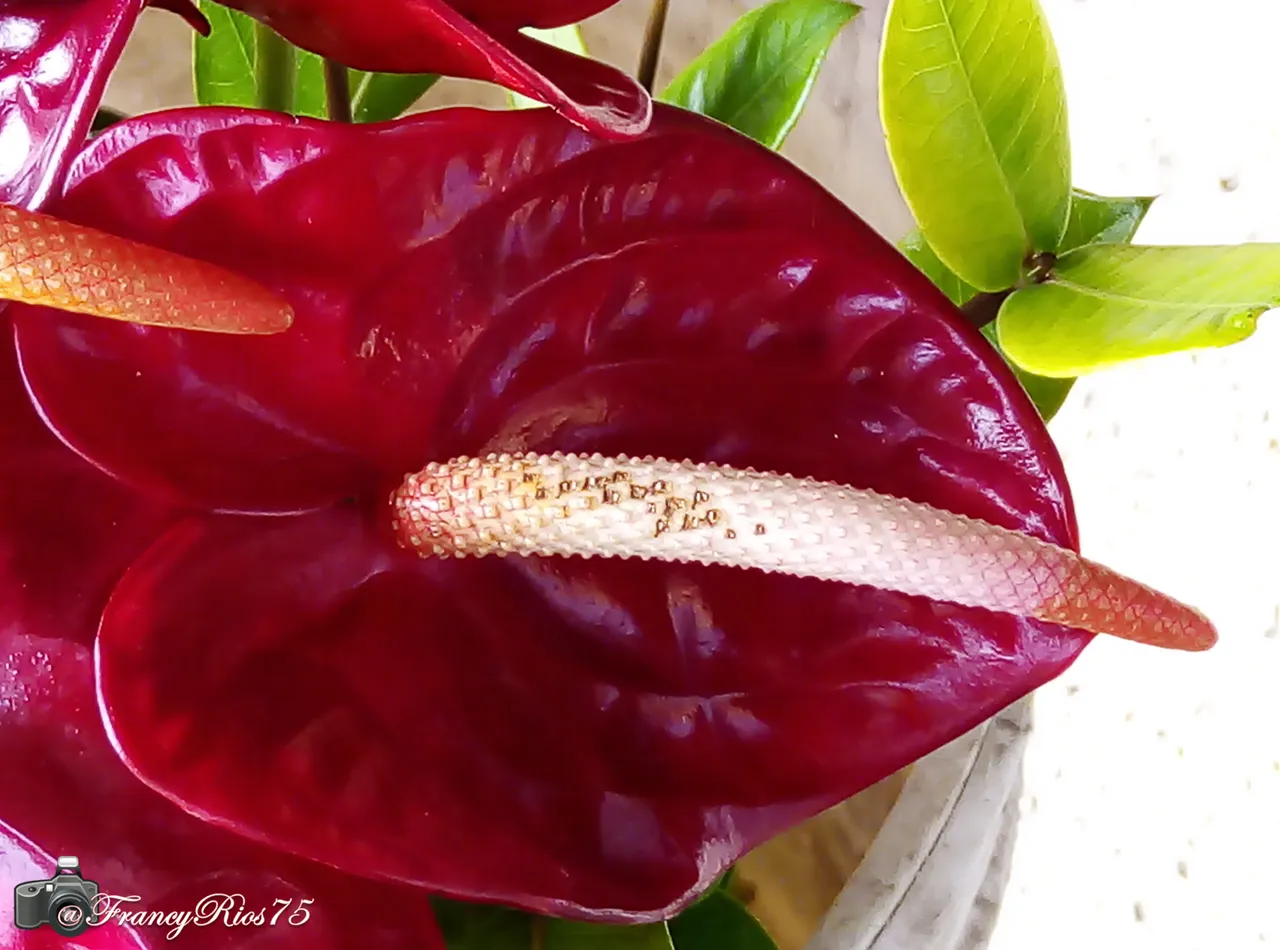

The Red Anthurium or Love Flower, which, by the way, as a curious fact, has become the emblem of Hawaii, is also known as Red Lily or Painter's Palette. Now, another interesting fact about this plant, is that although it is toxic, so you should be careful not to ingest it, paradoxically, it is considered a purifying plant. This is because it apparently has properties that purify the environment by eliminating those harmful substances that can be found in the air.

I should point out that, although it is true that the most popular is the red anthurium, advances in genetic modifications and improvements have provided us with a wide variety of colors. Nowadays we can find them from white to pink, which could be considered the most traditional, to more unusual colors such as orange, apple green or chocolate. I have even had the pleasure of seeing them in really fantastic shades, such as, for example, green and red or orange and yellow.

Antes de finalizar no podía quedarme sin mencionarles un último detalle súper curioso de esta planta. Resulta, que en algunas culturas se les atribuía poderes afrodisíacos, considerándose incluso como un símbolo de fertilidad, imagino que esa es la razón de que se le llame Flor del Amor. Incluso, era ofrecido por aquellas mujeres que deseaban quedar embarazadas, pero no encontré realmente gran información al respecto. Al parecer, la razón solo se debía a la forma de la flor, que se asociaba al órgano sexual masculino. Bueno, ahora si me despido, espero que les gustara no solo las fotografía, sino la información que les comparto sobre esta planta. También espero sea del agrado del amigo @Adalger, ya que será mi entrada de esta semana para el maravilloso concurso que organiza, Amazing Nature Contest - July 2021 - #01. Les envío muchas bendiciones, no olviden cuidarse y cuidar a los suyos cumpliendo con las medidas de bioseguridad. Se les quiere.
Before finishing, I could not leave without mentioning one last curious detail about this plant. It turns out that in some cultures it was attributed aphrodisiac powers, even being considered as a symbol of fertility, I guess that is the reason why it is called Flower of Love. It was even offered by those women who wanted to get pregnant, but I did not really find much information about it. Apparently, the reason was only due to the shape of the flower, which was associated with the male sexual organ. Well, now I say goodbye, I hope you like not only the picture, but the information I share about this plant. I also hope my friend @Adalger likes it, since it will be my entry this week for the wonderful contest he organizes, Amazing Nature Contest - July 2021 - #01 . I send you many blessings, don't forget to take care of yourselves and yours by complying with biosecurity measures. You are loved.

Bibliographic References || Referencia Bibliográficas
https://tiendahusqvarna.com/blog/anthurium/
https://es.wikipedia.org/wiki/Anthurium
https://www.floresyplantas.net/anthurium-andreanum/

Contenido y fotografías de mi propiedad intelectual
Información Técnica
| Cámara | Pentax * istDL |
|---|---|
| Lente | * Pentax 18-55 |
| Iluminación | Luz Natural |
| Locación | Barcelona, Estado Anzoátegui, Venezuela |
Content and photographs of my intellectual property
Technical information
| Camera | Pentax * istDL |
|---|---|
| Lens | * Pentax 18-55 |
| Lighting | Natural Light |
| Location | Barcelona, Anzoátegui State, Venezuela |


